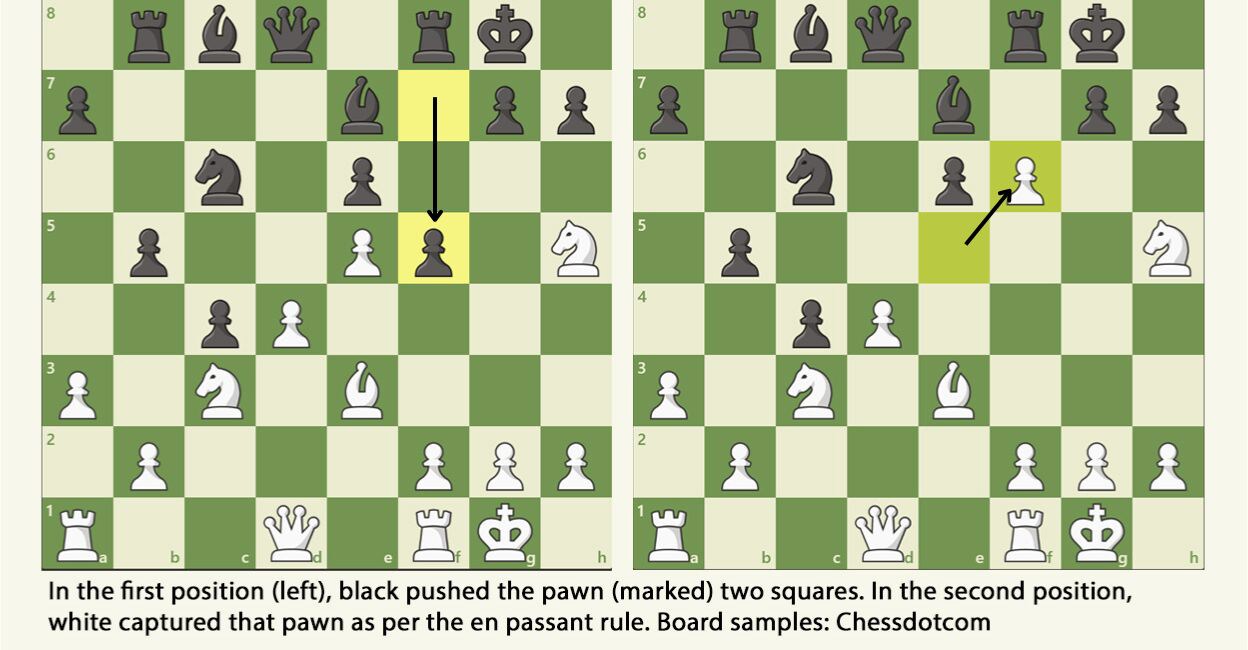Special pawn move called 'en passant' played in Game 13 of World Chess Championship
.jpg?w=1120&h=583)
Mail This Article
The penultimate classical game of the World Chess Championship between China's Ding Liren and India's D Gukesh witnessed a special pawn move called 'en passant' (on passon).
The en passant move was played by Gukesh on move 16 in Game 13 when he captured Ding's 'f pawn' with his 'e pawn'. While 'en passant' is not uncommon in chess, it had not been played in the 12 previous games at the ongoing championship in Singapore.
What is 'en passant', and how is it different from normal pawn captures?
As per the laws of the game, a pawn is allowed to move in a straight line and only forward. Pawns are only allowed to capture diagonally.

A pawn may move into a square immediately in front of it on the same file, provided that square is not unoccupied. While a pawn can move just one square at a time, it may advance two squares of its first move, provided that both squares in front of it are unoccupied.
Now, assume when a pawn jumps two squares on its first move, there is an opposing pawn on the same rank but on an adjacent file. In this peculiar situation, the opposing pawn is allowed to capture the one that has advanced two squares as though the latter had been moved only one square. This rule is called 'en passant', and it is intended to ensure that a pawn cannot use its two-square move to skip past an enemy pawn. However, there is no obligation to play 'en passant' whenever this position occurs.

